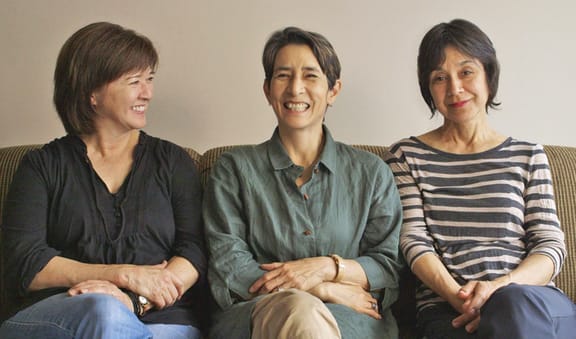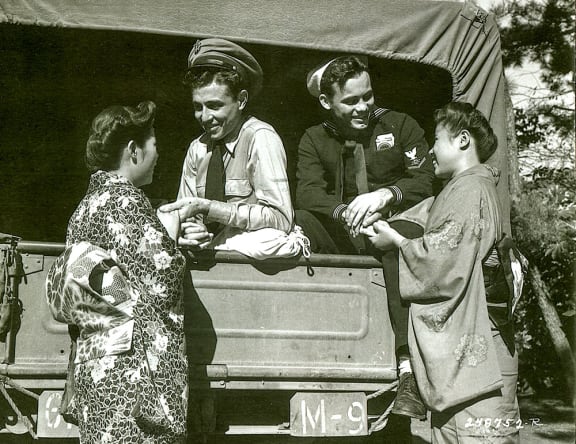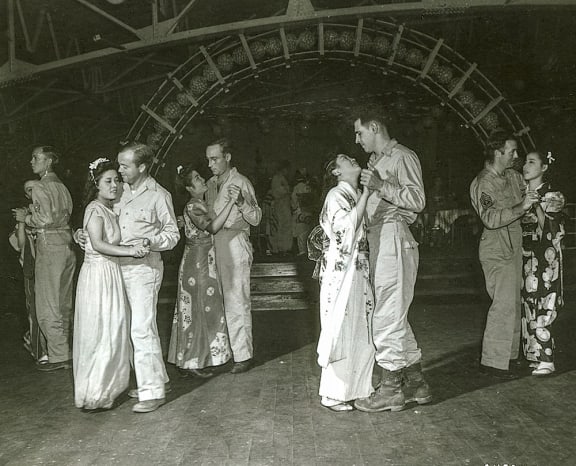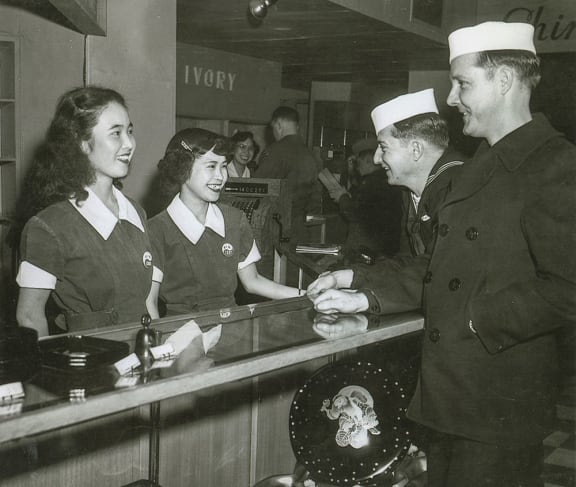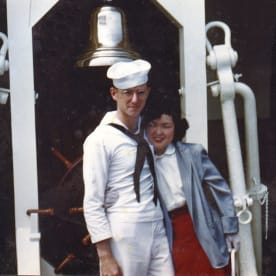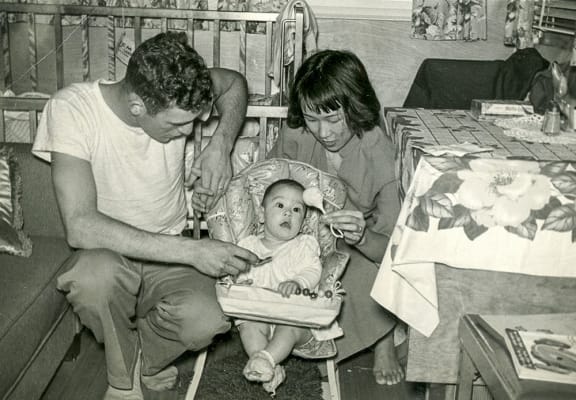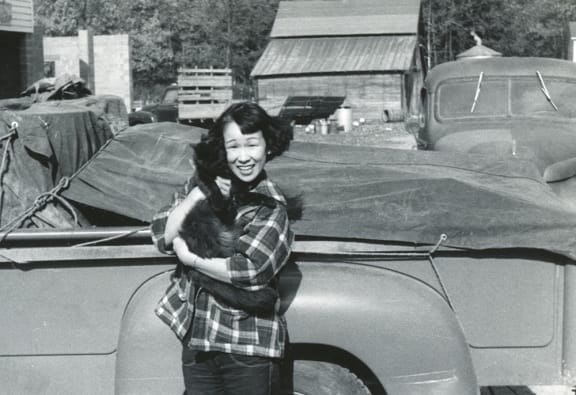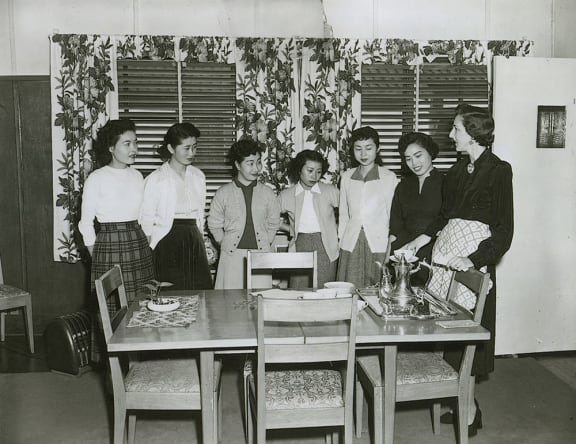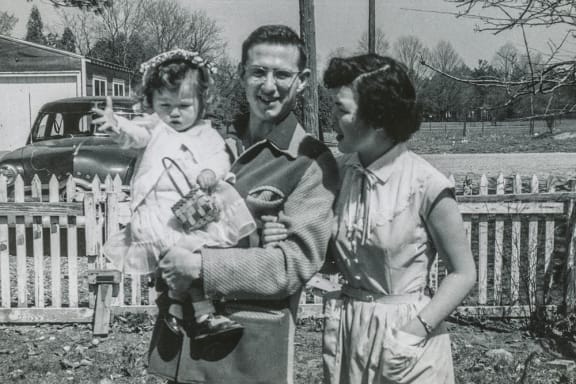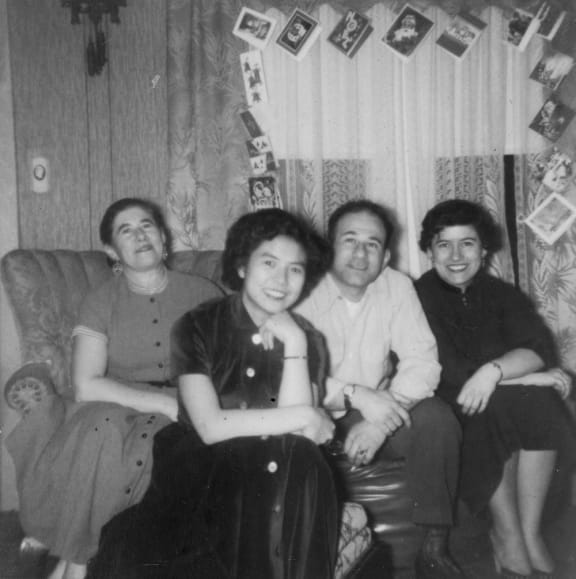After WWII, around 50,000 Japanese women left a country brought to its knees by firebombing and atomic bombs and left for new lives in the United States with American husbands – mostly servicemen who’d been stationed there for the Korean War.
Three journalists and daughters of Japanese ‘war brides’ have made an intimate short documentary telling their mothers’ stories – Fall Seven Times, Get up Eight: The Japanese War Brides.
Two of the filmmakers Karen Kasmauski and Lucy Craft join Lynn Freeman.
Karen says almost nothing has been written about the Japanese war brides that came to the United States and the women made the film to fill a gap in knowledge.
“Why did they come over? Why did they decide to risk everything to do this?”
“These were not average Japanese women … they were risk-takers and people who were extraordinarily self-centred, I think” says Lucy.
“Japanese men were in really sad shape, the economy was at its lowest point ever …Then you have these young strapping, very healthy very optimistic people with lots of disposable income stroll into Japan.
“For someone who was ambitious and wanted to prove herself and was willing to take a gamble, this was a very clear opportunity.”
Lucy and Karen’s mothers were very different.
Lucy says her parents both loved learning and languages. Her mother studied for a second degree in the States (in microbiology) which enabled her to build a career.
Karen’s mother didn’t value education and was perhaps more typically practical, she says.
“Her whole thing was just to find someone who could take care of her and support her.”
Karen says her mother’s story is a reminder that marrying for love is a largely Western concept.
“In reality most marriages around the world are not based on love – they’re based on agreements between families, they’re based on economic sustainability and survival”.
Many of us think nothing of interracial marriage these days, she says, but in the United States at the time it was unthinkable for most people.
“This was the ultimate transgressive act in the 1950s. It just wasn’t done for people from two different races - be it black, Asian, white, Hispanic, et cetera – to marry. 99 percent of the American public was against people from different races marrying. And scholars also thought it would lead to tragedy.”
The women were unsure where of their place in a segregated society.
Karen's mother tells a story of arriving in Virginia and having no idea whether to go into the bathroom for coloured people or for whites.
Lucy says her mother got off fairly lightly, even in the racially intolerant state of Louisiana, but still faced daily dilemmas. Once she got on a bus that was half-black and half-white and wasn’t sure where she should sit.
“My mom, being a practical one, said “I’ll sit in the middle”. Also if someone said ‘You belong in the other section’ she could easily move to the proper side of the bus” says Lucy.
“They were tough cookies, all of them.”
